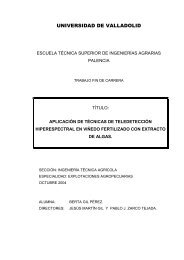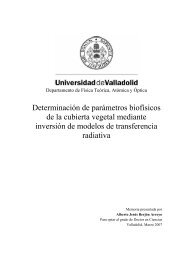10th INTERNATIONAL VERTICILLIUM SYMPOSIUM 16-20 ...
10th INTERNATIONAL VERTICILLIUM SYMPOSIUM 16-20 ...
10th INTERNATIONAL VERTICILLIUM SYMPOSIUM 16-20 ...
You also want an ePaper? Increase the reach of your titles
YUMPU automatically turns print PDFs into web optimized ePapers that Google loves.
DETECTION AND QUANTIFICATION OF <strong>VERTICILLIUM</strong>DAHLIAE AND V. ALBO-ATRUM IN SOILS TO DETERMINERISK OF <strong>VERTICILLIUM</strong> WILT IN STRAWBERRYJ. PETERS 1 , T. O’NEILL 2 , K. GREEN 2 , J. WOODHALL 1 , A. BARNES 1 ANDC. LANE 11 Food and Environment Research Agency, Sand Hutton, York YO41 1LZ2 ADAS UK Ltd, Boxworth, Cambs CB23 4NN, UKE-mail: jeff.peters@fera.gsi.gov.ukA three year study, funded by the UK’s Horticultural Development Company,began in <strong>20</strong>09 to improve disease control through the development of a rapid,affordable and accurate diagnostic test for verticillium wilt pathogens affectingstrawberry. This will permit routine pre-planting soil testing for specific soil-borneVerticillium species. The current method for detecting and enumerating Verticilliumdahliae in soils, commonly referred to as the ‘Harris test’, is relatively costly andtakes 6-8 weeks from sample receipt to reporting. The proposed molecular diagnostictest will quantify the amount of target pathogen DNA in a few days for around halfthe price of the conventional test.This work focuses on refining methods for extracting from large soil samples(c. 250 g) and designing real-time polymerase chain reaction (qPCR) assays forquantifying Verticillium species affecting strawberry. There was a reasonablerelationship between levels of V. dahliae microsclerotia in naturally infested fieldsoils, as enumerated by the Harris test, and by qPCR (P




